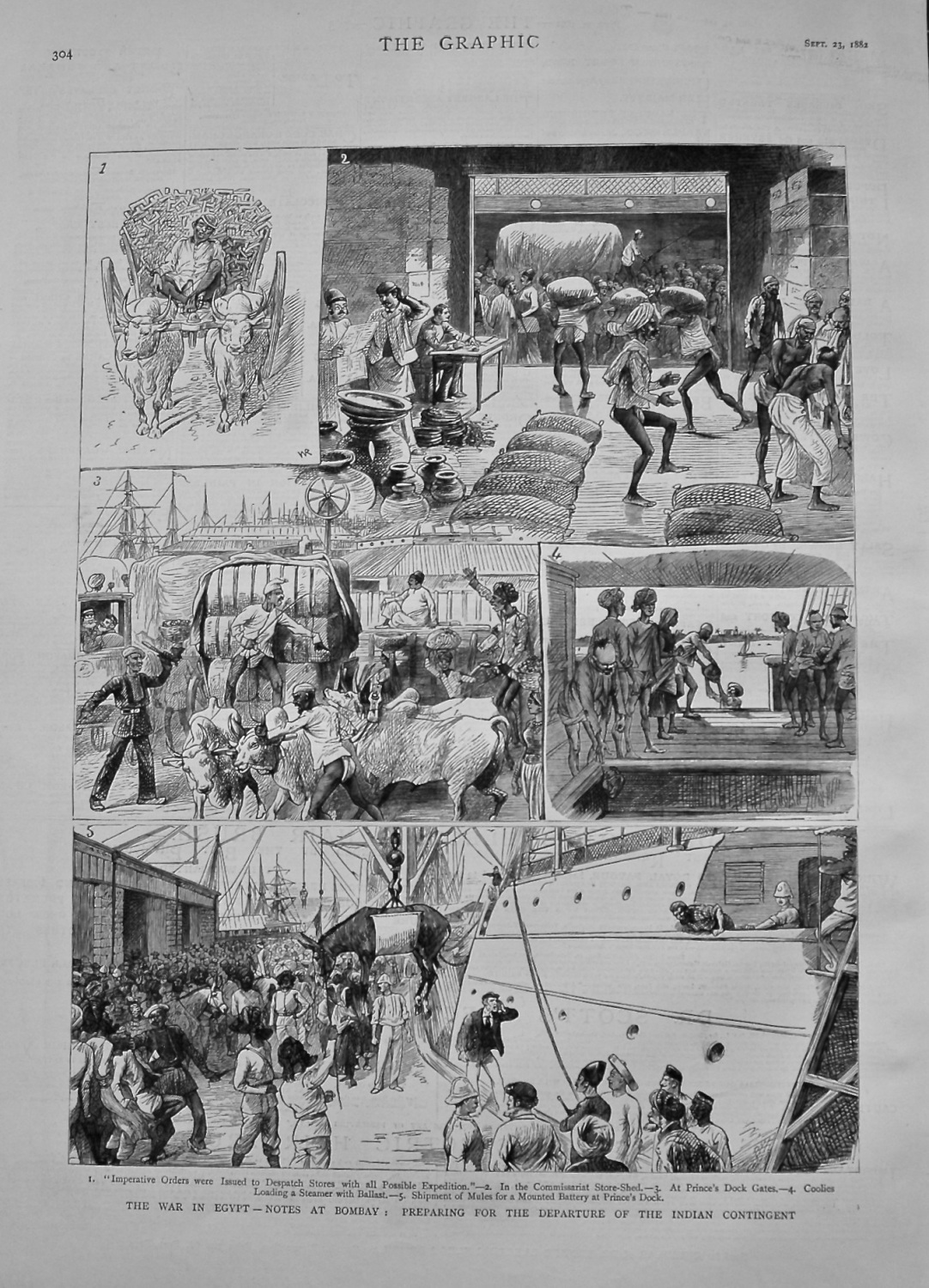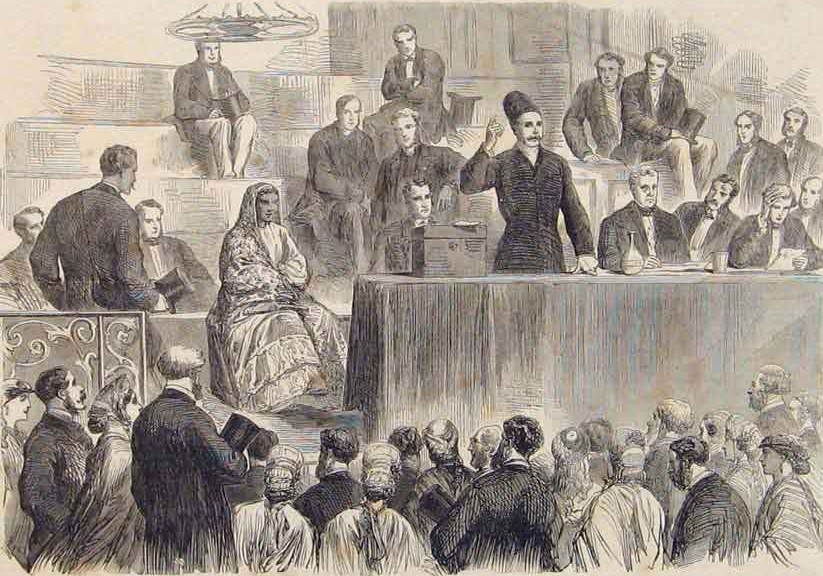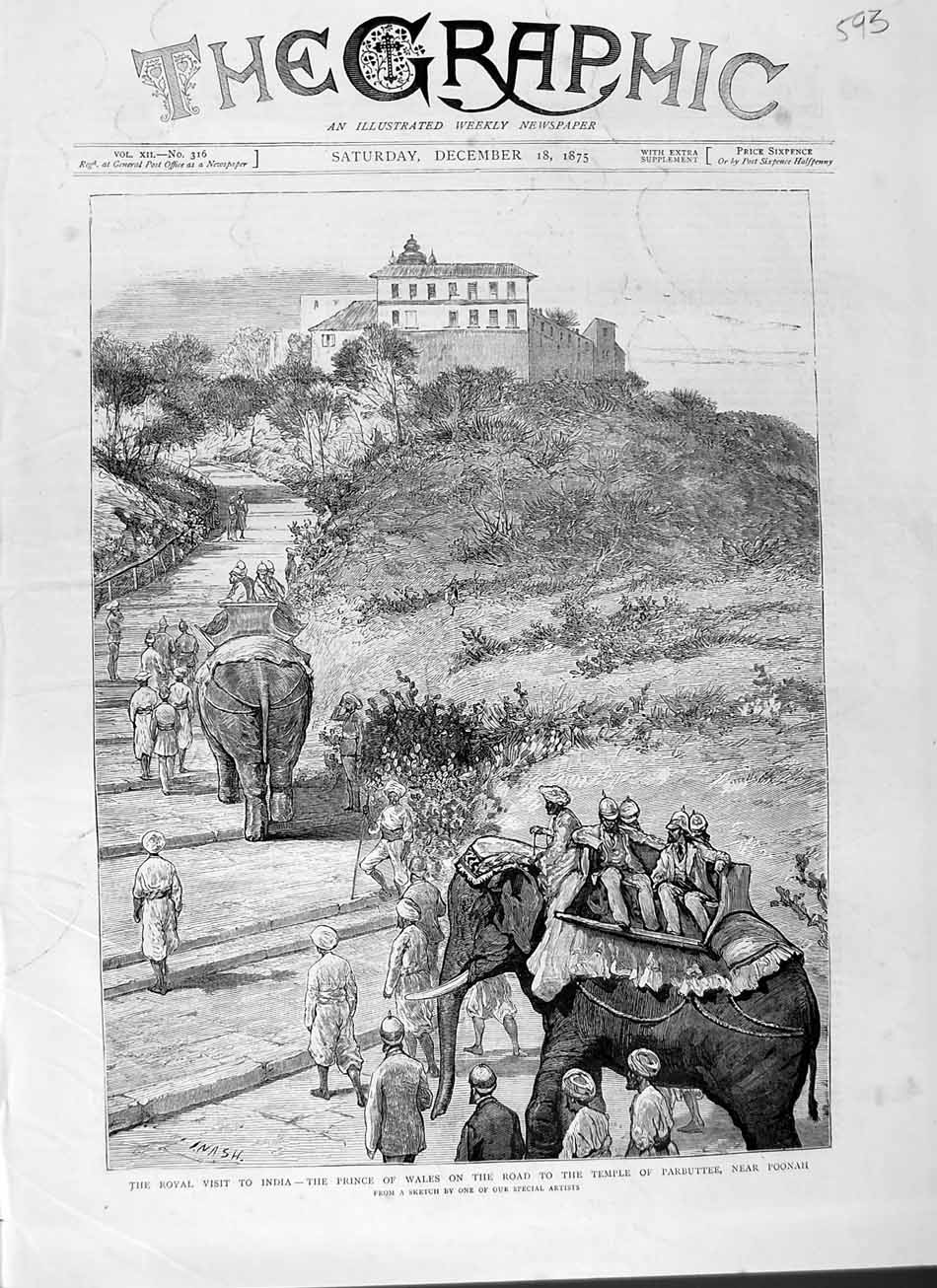THEN AND NOW
1884 Pig Sticking India Horses Spear

1877 India Poonah Boat Club
1877- British families at Poona Boat Club (now Royal Connaught Boat Club) on the bank of river Mula-Mutha
1858 India-dangers of Palanquin travel-- Wolves Hyenas Jackals Tiger


“Mr Benwell, the artist to whom we are indebted for the two accompanying sketches, illustrative of the perils which beset travellers in India, supplies the following particulars concerning dawk travelling in that country… The remainder of the narrative is, however, best told in Mr Benwell’s own words: “In a state of perfect helplessness from the debilitating effect of the fever, I arrived at the Dawk bungalow.....”
WAR IN EGYPT-INDIAN TROOPS LEAVING BOMBAY DOCKS FOR EGYPT

1882 Anglo-Egyptian War:-n 1881, an Egyptian Army officer, Colonel Ahmad Urabi (see Ahmed Orabi), initiated a coup against the Ottoman Khedive in Egypt because of grievances over disparities in pay between Egyptian and European employees, as well as other concerns (see Urabi Revolt). In January 1882 the British and French governments sent the "Joint Note" to the Egyptian government, declaring their recognition of the Khedive's authority. On May 20, 1882, British and French warships arrived off the coast of Alexandria. On June 11, 1882, a riot occurred in Alexandria that killed 50 Europeans, though Colonel Urabi ordered his forces to put down the riot. On July 11, 1882, British warships began their bombardment of Alexandria.
The British army tried to reach Cairo through Alexandria but was stopped for five weeks at Kafr-el-Dawwar. In August, a British army of over 40,000, commanded by Garnet Wolseley, invaded the Suez Canal Zone. He was authorized to destroy Urabi's forces and clear the country of all other rebels.
Battle of Tel el-Kebir
This important battle was fought on September 13, 1882. The Urabi forces were routed and the capital was captured. Khedive power was then restored as the authority of Egypt.
British occupation
British troops then occupied Egypt until the Anglo-Egytpian Treaty of 1922 and Anglo-Egyptian Treaty of 1936, giving gradual control back to the government of Egypt.
Hopkins argues that the British continued its occupation of Egypt after 1882 in order to guarantee British investments, "Britain had important interests to defend in Egypt and she was prepared to withdraw only if conditions guaranteeing the security of those interests were met - and they never were
Prince'S 'Levee' AT BOMBAY 1876{ the simple act of getting up in the morning WHICH was raised to a ceremonial custom at the court} AND India'S Maharana Oudeypore 1876
KING'S 'LEVEE' =the simple act of getting up in the mornin WHICH was raised to a ceremonial custom at the court
AND India'S Maharana Oudeypore 1876
The Anglo-Persian War 1856-1857

British-Indian forces attacking at the Battle of Kooshab
PERSIAN ARMY WAS DEFEATED
Bombay Cavalry AT ANGLO PERSIAN WAR 1856-1857 AT KOOSHAB

THE PERSIAN WAR .THE CHARGE OF THE BOMBAY CAVALRY AT THE BATTLE OF KOOSHAB
Origins
In
the context of the Great Game — the Anglo-Russian contest for
influence in Central Asia — the British wished for Afghanistan to
remain an independent country friendly to Britain as a buffer against
Russian expansion towards India. They opposed an extension of Persian
influence in Afghanistan because of the perception that Persia was
unduly influenced by the Russians. The Persians had repeatedly
attempted to acquire Herat by force, most recently in 1838 and 1852;
both times British opposition had convinced them to back down prior to
war. They made a fresh attempt in 1856, and succeeded in taking the
city on 25 October, with Russian encouragement and in violation of the
existing Anglo-Persian treaty. In response, the British
Governor-General in India, acting on orders from London, declared war
on 1 November.
Koosh-Ab
After
the arrival of the C-in-C, the force advanced inland and defeated the
Persian field army at Koosh-Ab on 8 February 1857. The Poona Horse
carries a Standard surmounted by a silver hand and bearing a Persian
inscription captured at Koosh-Ab, in commemoration of the brilliant
charge of the 3rd Bombay Light Cavalry which broke into enemy infantry
and decided the fate of the day. The honour was awarded vide GOGG 1306
of 1858 and spelling changed from Kooshab vide Gazette of India No 1079
of 1910.
The first electric train in India: circa 1925(the inaugural train at Bombay VT.)

Picture at left shows H.E. the Governor making a speech on the occasion, while the pic on the right shows the inaugural train at Bombay VT
The first emu cars for the erstwhile BB & CI Railway (now WR) being unloaded from a ship around 1925.

THE FIRST ELECTRIC RAILWAY ENGINE GETTING OFF LOADED FROM SHIP 1925
HMS Calcutta -SHIP MADE IN BOMBAY 1831

HMS Calcutta was an 84-gun second-rate ship-of-the-line of the Royal Navy, built in teak to a draught by Sir Robert Seppings and launched on 14 March 1831 in Bombay. She was the only ship ever built to her draught. She carried her complement of smooth-bore, muzzle-loading guns on two gundecks. Her complement was 720 men (38 officers, 69 petty officers, 403 seamen, 60 boys and 150 marines).
In 1855 the ship had been in reserve, but was recommissioned for the war between Russia and Britain and sailed for the Baltic. After two months she was sent home again, as being useless for modern naval actions.
KANHERI CAVES

The caves, which are more than 100 in number, are reached from the Bhandup station of the Central railway or the Borivli station of the Western Railway by a good black topped road emanating from the Western Express Highway and passing through the National Park at Borivli. From Bhandup, 24 km. (fifteen miles) north-east of Bombay, the Kanheri road runs north-west for about a mile, formerly across rice fields and grass uplands, till, at the foot of the Salsette hills, it joins the old Bombay-Thane road. It then climbs a pass in the hills, and winds about a mile across the rugged upland of Vihar, the gathering ground of the Vihar lake, which, starting on the left, stretches about 8 km. (five miles) to the south-west, its surface broken by wooded islets. Beyond the Vihar gathering ground, the path passes, for about a mile, through a thick belt of forest, over the slightly raised watershed that separates the Tulsi and the Vihar valleys. Near Tulsi the road swerves to the left, keeping to the south-west of Tulsi lake, a beautiful sheet of water surrounded by wild forest-clad hills. For the two remaining miles, from Tulsi to Kanheri, the road though formerly not fit for carts is now black-topped and motorable. The first mile lies along the Vihar-Borivli road, with rises and falls, down the wooded Tulsi or Tasu valley, surrounded by high forest-clad hills, through glades of withered grass, thick copsewood, and bright green clumps of bamboos. The last mile is along a footpath that strikes from the Borivli road north to Kanheri.
BORIVALI LION SAFARI PARK

This Lion Safari Park is the second of its kind in India, the first being in the Nehru Zoological Park, Hyderabad.
The
Lion Safari Park in Borivli is a miniature Gir Forest. The 13 hectares
site occupied by the park has a gentle slope from north to south. The
green rolling hills of Kanheri seen prominently from the safari park
remind the visitor of the Girnar hills of the Gir Forests. The Lion
Park includes many species of trees characteristic of the Gir.
The
1200 m. long, 6 1/2m. high chain-like fence fitted to channel iron
posts encloses the lion park area and is lion-escape-proof. On the
northern boundary, the fence alignment goes up a hill, thus including
in the Park one complete boulder-strewn face of the hill. This is a
very attractive feature which lends beauty and grandeur to the safari
park. The fence is painted green and merges with the surrounding
greenery.
The visitors to the Safari Park are
provided with mini-buses (each with 10 seats) from which they can view
the animals roaming free in the Park. These minibuses are provided
with safety measures to protect the visitors from lions. A rescue
vehicle also with safety measures is always kept in readiness to
counter unforeseen difficulties of the mini buses inside the Park. The
1.25 km long, asphalt internal road system within it is planned in such
a manner that visitors could be taken rea sonably close to the lions,
wherever the lions be within the park. To prevent lions from escaping
from the park when the gate is opened to allow entry into and exit from
the Lion Park by the safari, a double door arrangement is provided at
the gate. The lion house hidden from the visitor's view is a weather
shelter to lions into which they are taken daily in the evening for
feeding. A natural looking pond provides drinking water to the animals.
Ali Baba and his 400 hookahs-Bhendi Bazar's popular dealer, the iconic Ali Baba

He procures the hookahs from Iran, Dubai, China and Moradabad (Uttar Pradesh). "My prices are lower than elsewhere and it's genuine custom-made maal ranging from Rs 90 to several thousands
"Two apples (apple, saunf), mint (perfect for summers), Paan Rasna, Paan Fantastic and Al Araz Gum (chewing gum-like) are the most popular hookah flavours,"
Bhendi Bazar's popular dealer, the iconic Ali Baba
;3-in-one hookah has a holder for a cigarette, a hookah and smoked as a pipe



Not for sale: This hookah made from pure marble, is 103 years old and
displays designs in gold embossed paint and embedded genuine gemstones




































![[Mumbai_Hot_Spots_Pics___Old_Colaba_0.jpg]](https://2.bp.blogspot.com/_XVC02d8sUFU/SoBe3HDr-HI/AAAAAAAAB8s/3AE4ZAfxsMI/s640-rw/Mumbai_Hot_Spots_Pics___Old_Colaba_0.jpg)







